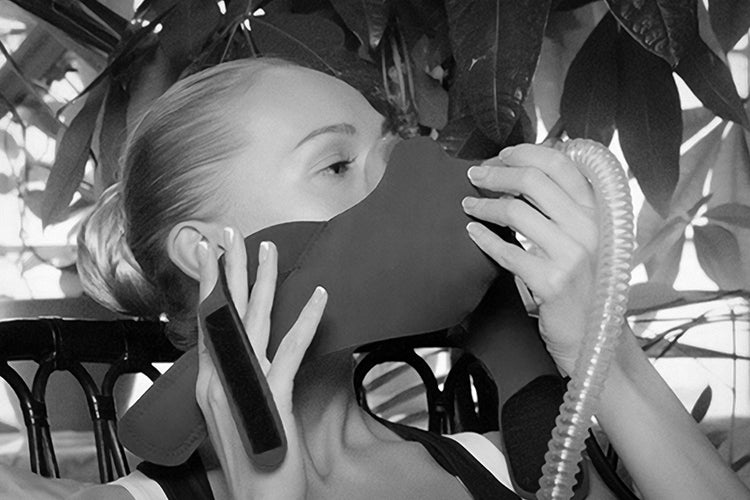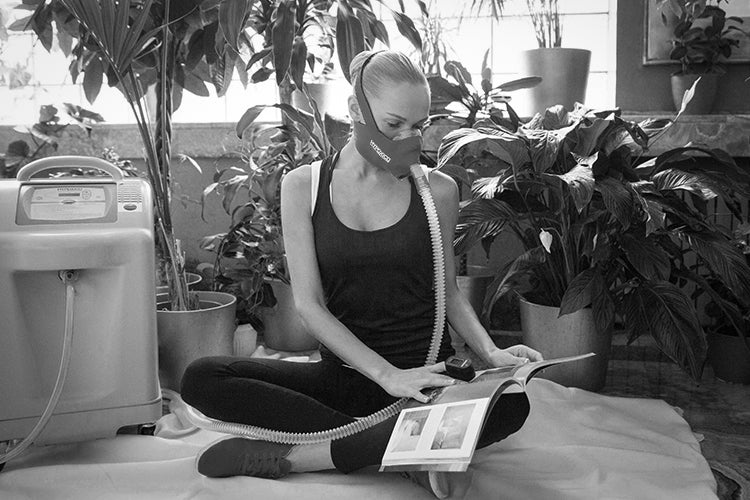Alternating Altitude
Intermittent Hypoxic Exposure (IHE)
This altitude training method involves using a mask connected to an altitude generator to deliver short intermittent doses of hypoxic air.


Up and Down
Alternating altitude delivers an acute hypoxic stimulus in order to perform altitude training and trigger beneficial reactions while at rest. While this method is most often used in medical treatments, therapies, and breath training, it is also beneficial for mountaineers and athletes, as it will supplement the acclimatization effort of sleeping at altitude and assist in rehabilitating injured athletes who cannot yet exercise.

How to Alternate Altitude
IHE is simply performed with an altitude generator connected to an altitude training mask. This makes it easy to rapidly adjust simulated altitude and conveniently cycle between mask on and off while sitting comfortably.
Shop GeneratorsWho & What It's For
Alternating altitude is beneficial to a wide range of people and applications. The most common include:
Spinal Cord injury
Alternating altitude has shown excellent results as a therapy for improving mobility in patients with incomplete spinal cord injuries.
Research has shown that exposure to acute intermittent hypoxic exposures for as little as 30 minutes can improve torque, strength, and other functional outcomes.
Heart Disease
IHE represents a promising non-pharmacologic modality in the prevention and treatment of cardiovascular diseases.
Studies conducted on the subject have shown reduced blood pressure, reduced cardiac arrhythmias, increased aerobic capacity, reduced hypertension, and weight loss.
Asthma
Studies have shown that a proper IHT/IHE program can successfully minimize the symptoms of asthma and the occurrence of severe asthmatic episodes. Through its enhancement of mitochondrial (cellular) tolerance to oxidative stress via increased anti- oxidative enzymes, hypoxic therapy can alleviate asthmatic stress, which is largely a result of compromised anti-oxidative defense.
Diabetes
IHE has been shown to control blood glucose levels, increased fat burning, decrease blood pressure, decrease average heart rate, and reduce the probability of disease-related health complications like renal failure.
Mountaineers
For mountaineers, IHE is an excellent supplement to sleeping and exercising at altitude because it allows them to experience and become accustomed to the extreme altitudes they'll encounter on the mountain.
Rehabilitation
IHE provides the ability to achieve a cardiovascular workout while at rest, which is highly beneficial for those with reduced mobility due to injuries or other health conditions.
Training Guidelines
The following guidelines are useful for getting started with a alternating altitude protocol:
1 Choosing Simulated Altitude
Because the hypoxic doses are short, IHE should be performed at a very high altitude of 18,000 to 21,000 feet.
2 Mask on
The mask should be held against the face for 3-5 minutes to achieve an acute hypoxic state.
3 Mask Off
The mask should be removed from the face for the same duration that it was on in order to breathe oxygen-rich ambient air.
4 Session length
Steps 2 and 3 should be repeated 6 times each for a total session length of 18-30 minutes.
5 Blood Oxygen Saturation (SpO2)
A fingertip pulse oximeter should be worn during each session and SpO2 kept above the 80%. Any discomfort can be managed with shorter intervals or a lower altitude.
6 Session Frequency
Sessions can be performed once daily between 5 and 7 days per week.
Questions?
If you have any questions regarding altitude training and our systems, please don't hesitate to reach out and speak with one of our experts: